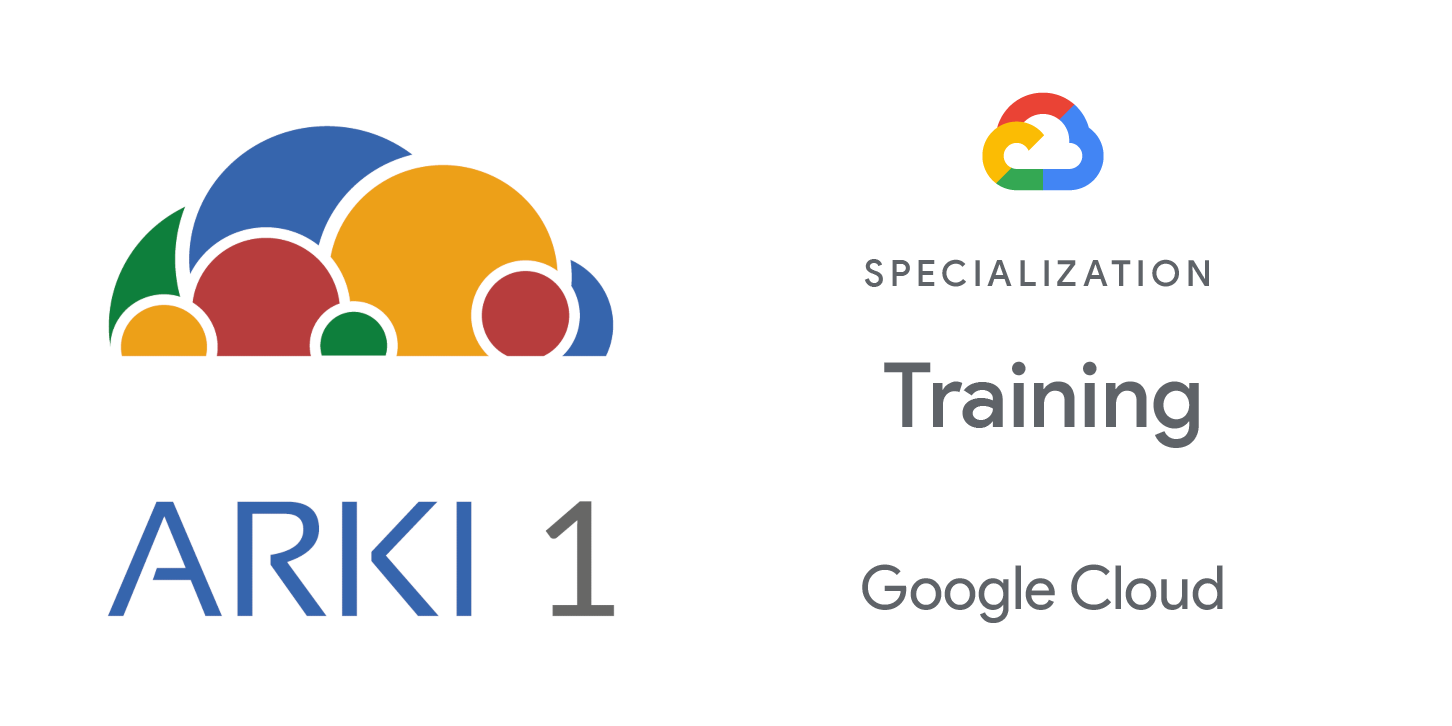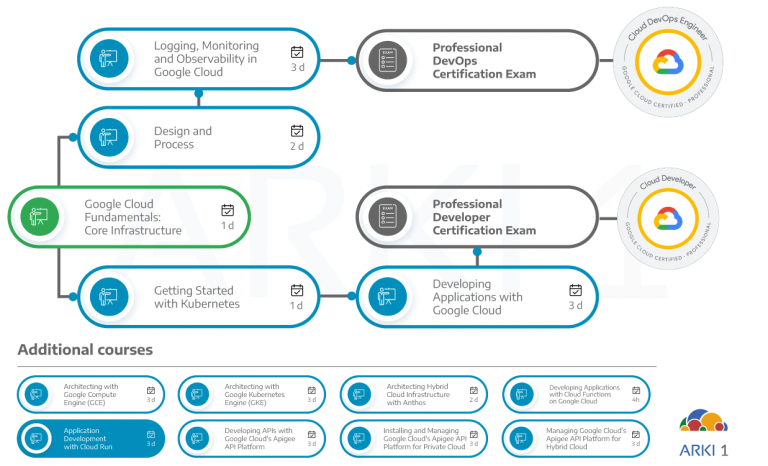This course introduces you to the fundamentals, practices, capabilities and tools for modern cloud application development with Cloud Run. Through a combination of lectures, hands-on labs, and supplemental materials, you learn how to develop and deploy applications on Google Cloud by using Cloud Run. This version of the course consists of two separate courses that include topics on creating containers and developing applications with Cloud Run. The courses are: Developing Containerized Applications on Google Cloud, Developing Applications with Cloud Run on Google Cloud: Fundamentals.
Objectives
In this course, participants will learn the following skills:
- Define containers and container images.
- Build and package applications into container images.
- Identify best practices used to create, test, and secure containers.
- Understand the basics of Cloud Run and Google Kubernetes Engine.
- Understand the fundamentals of Cloud Run that include the resource model, container lifecycle, and autoscaling.
- Develop and test applications locally before deploying to Cloud Run.
- Use service identity and IAM with Cloud Run.
- Integrate Cloud Run applications with Google Cloud services.
Audience
This class is aimed at the following job roles:
- Partners and customers who want to learn to use the tools and services on Google Cloud to build and run containerized applications.
Prerequisites
To get the most of out of this course, participants should have:
- Familiarity with Linux commands and command line interface.
- Knowledge of the Google Cloud console, gcloud CLI, and networking.
- Basic understanding of programming languages such as Node.js or Python.
- Understanding of shell scripts, HTTP, and experience with HTTP client tools like cURL.
Duration
Investment
Course Outline
- Define Looker and the capabilities it provides for working with data
- Navigate the Looker user interface to access data and functionality
- Explain the four core analytical concepts in Looker (dimensions, measures, filters, pivots)
- Discuss dimensions to access data attributes
- Identify measures to aggregate data attributes
- Combine dimensions and measures for richer data analysis and visualization
- Filter dimensions and measures to analyze a subset of the data
- Use pivots to restructure and group data
- Explain how table calculations and offset functions are used to work with data in Looker
- List the types of table calculations and offset functions available in Looker
- Create new metrics instantaneously with table calculations and offset functions
- Explain how to create and deliver Looks and dashboards in Looker to share results with stakeholders
- Discuss how to create and share standalone visualization reports called Looks
- Discuss how to create and share dashboards to combine multiple visualizations for a business topic or domain
- Add new content to an existing dashboard
- Add filters to a Look or dashboard for flexible analysis of a subset of the data
- Discuss the delivery of data outside of Looker for access by other stakeholders or systems
- Discuss folders in Looker to organize content for navigability and discoverability
- Discuss the creating and sharing of boards to centralize content that lives in different folders in a Looker instance


